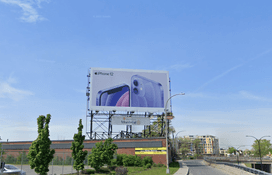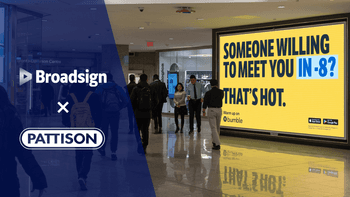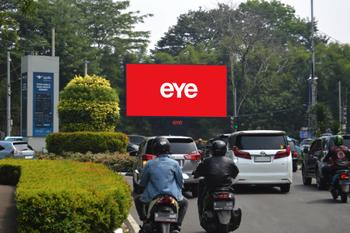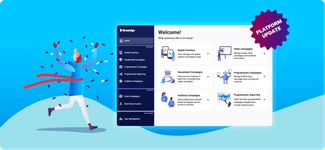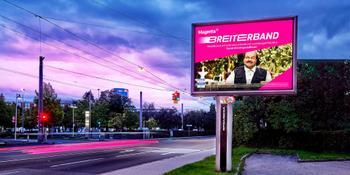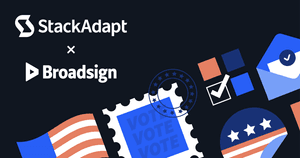In this installment of our OOH Executive Insights series, Broadsign’s Sr. Vice President of International Operations and one of the founders of Ayuda, Joe Cotugno, discusses why static OOH remains relevant in the age of digital media, what challenges are affecting OOH’s competitiveness with digital media and how to address them, as well as up-and-coming trends to look out for.
Why static OOH remains an effective medium in the age of digital media
While it might seem easier to create dynamic and better targeted ads online, advertisers face the issue where consumers are continuously inundated with online content. This makes it challenging for their content to stand out and puts it at risk of being tuned out by consumers. With static OOH, it’s much harder to ignore due to its physical presence and the sheer size of some billboards.
Moreover, there will always be locations where static OOH will provide more value than digital screens. Locations like highways or busy roads do not benefit from having digital billboards, as motion isn’t allowed due to safety concerns, and a digital screen without motion loses its primary value of being able to deliver dynamic content.
In fact, Apple has advertised on the same static billboard in Montreal for the past 20 years for this reason. Located near the intersection of two major highways, they have continued to advertise their products on this ginormous billboard that can easily reach their target audience commuting to and from work.
Picture taken from Google Maps
Finally, while static OOH can’t use motion to create dynamic ads, it has its own unique way of being dynamic. Here’s how:
Current challenges affecting static OOH’s competitiveness with digital media
In today’s world, which is becoming increasingly digital, people are not only used to but also expect things to be done quickly. While advertisers can already book digital OOH inventory quickly with tools like real-time bidding in programmatic DOOH (pDOOH), there remains the challenge of getting the static side of OOH to be as fast as possible.
One of the most time-consuming processes in static OOH is the booking and production process. It can take two to three weeks just to book a location and then another two to three weeks to get the creative produced and printed. Shortening the turnaround time for this process is crucial in making it easier for advertisers to include static in their media mix.
With today’s more sophisticated tools, these issues can be addressed head-on with software. We now have static management solutions that provide real-time availability, allowing chartists and sales representatives to view what’s available at any given time. The availability of real-time data has allowed media owners to turn proposals into booked campaigns in a matter of hours rather than weeks.
Another long-term vision the entire OOH industry should strive toward is the standardization of buying and measurement processes to align with other channels. Unlike other mediums, such as TV, newspaper, radio, and online, which are sold by audience, static OOH is still often sold by location.
If we wish to reduce friction for advertisers when buying static OOH, we need to speak the same language as other mediums, which requires us to develop similar measurement methodologies. We’re already seeing industry players, such as Geopath in the U.S., and the OMA in Australia, coming out with better and more standardized measurement methodologies. Here’s why we need to adopt the same measurement system as other mediums:
Regarding the current measurement process in static OOH, different companies in different markets use different metrics to measure return on investment (ROI). Personally, I believe we should move towards an outcome-based measurement to answer questions like: did I achieve my campaign goal? Did I increase awareness of my brand, product or service?
Today, static OOH campaigns primarily report on delivered impressions, which isn’t enough for marketers to determine whether they’ve achieved their campaign’s objective, or for management to prove the ROI of OOH. They’re not just spending money to reach people; they want them to be aware of something or affect some type of change in behaviour. While it will take time for the industry to move towards outcome-based measurement practices, there exist tools that media owners can adopt today, like brand-lift studies, which are commonly used in digital media and are growing in popularity in pDOOH.
Rising trends to invest in early to remain competitive
Making our business more sustainable is something that we all have to move towards, and unlike DOOH, static OOH has much more to consider when adopting more sustainable practices. It’s not just about electricity usage or the emissions emitted by digital screens but also the production process, like producing vinyl and posters and sending out trucks (and sometimes cranes) to install them on billboards.
We’re already seeing advertisers starting to request emissions data for OOH inventory, and as sustainability continues to be a strong influencer in our industry, they may begin buying inventory exclusively from media owners who have adopted more sustainable practices. Different ways to make your business more sustainable already exist, such as using LED for more efficient and longer-lasting lighting for your faces.
We’ve also seen advancements in poster materials, such as vinyl and mesh posters that can be stretched over the entire face and then taken down and re-used again, not only eliminating the need for adhesives, but also reducing the number of creatives produced. There are also newer, biodegradable poster materials, which are being developed.
Something that is going to revolutionize not just our industry but almost every industry is artificial intelligence (AI). Specifically with static OOH, AI can help us automate what was previously manual work. For instance, rather than having a person manually compile a proposal based on the advertiser’s brief, which could take up to a week to complete, we can train AI to find the best locations for us based on the parameters and criteria that we want, potentially making the buying and booking process as quick as with digital media.
Another example of how we can use AI to increase efficiency is by using it to automate the optimization of inventory occupation. Here’s how:
Until AI becomes readily available, you can already gain some of the automation capabilities by adopting a more sophisticated system than spreadsheets. While manually managing spreadsheets may work for you now, having capabilities like real-time availability, dynamic planning, and the ability to make your inventory available to your clients directly allows you to generate more inbound leads. Here’s an in-depth explanation as to why you should make the switch:
Want more insights on the Static OOH industry?
Wanting to better understand some of the existing and future challenges static media owners face, we surveyed owners with static inventory from across the globe. Sign up for early access to the report here!

